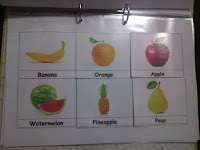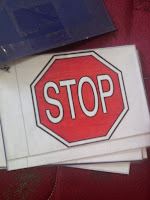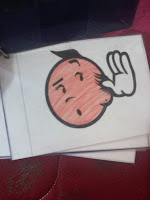Hi everyone! Last post, I wrote about some classroom tips that we used as children teachers and that have worked fine for us. However, there are other tips that were not included. We have used some of these and we saw other teachers using others. Below I will explain the use of grouping and reward system.
Grouping: Organizing students into groups is a great option for many reasons; students work together for a goal, they help each other, each student can be in charge of a role: facilitator, reporter, recorder, in this way everyone is held accountable, and when playing competition games students are motivated and engaged, it also helps decrease student's anxiety (shy students). This technique is great for children, teens, and adults. From a children teacher's perspective this technique has helped me manage large classes (30+ students) and it has worked perfectly most of the times.

When working with children it is important to let them know what group they belong to. I usually print out 2 sets of flashcards (using topics already studied in class) and I paste 1 set of the flashcards on their tables and use the other set on the board. For example: I paste a triangle on one table, a square on another, and I have the same ones on the board. In this away students know what gorup they belong to because they can SEE it.
Rocket race: this grouping technique is great and can be used for small and large classes. When students are divided into groups teacher assigns a "rocket" to each group (the rockets are all of different colors). The goal is that whenever students finish an assignment or achieve a goal they go up in the rocket race (to the moon or earth) and whenever they misbehave their rocket goes down. This is incredibly motivating, especially for children who love space!
Reward system: This is a very broad technique and can seem to some people a bit behavioristic. However, we are all free to try different techniques with each group of students and see which techniques work better with each class.
One kind of reward system I usually use with little kids (along with the grouping technique) is the use of stickers. I either buy stickers or just draw happy faces or stars on sticky paper and give it to them at the end of the class. This technique works wonders! However, students can get used to these and we, as teachers, must always be consistent and have some extra stickers after each class.


Another reward system is the "traffic light" I saw the picture below on Instagram yesterday and thought it was super cute. I personally haven't used this techniques but have seen other teachers use it and according to them it works great. This traffic light system is very easy to use. Green would mean "good behavior" yellow "attention, not behaving very well" and red "bad behavior, remove student from group, or talk with the teacher."
 |
great and easy way to let
students
know how they are behaving |
 |
| a variation of the traffic light |
In order to use these techniques as well as the ones mentioned in the previous post it is VITAL to let students (children, teens, adults) know WHAT is expected from them. With children it is very important to use visual cues of what appropriate behavior looks like as well as inappropriate behavior. And last but not least, this is something to be reviewed ALWAYS. Remind students of the rules as many times as possible and be CONSISTENT with them.






























